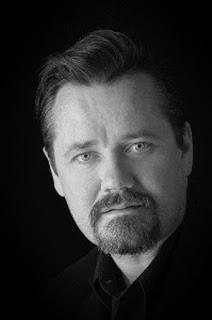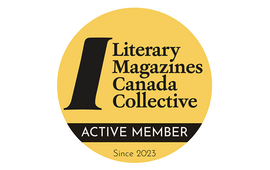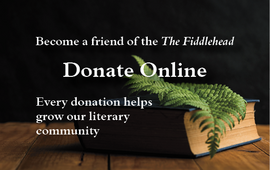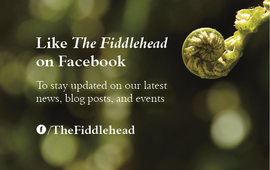
Robert Norsworthy: These stories show extensive knowledge of various subjects, from tree lines to the fur market to powwows. I was wondering how you researched these subjects for the stories. Did you ever attend a powwow or interview a forestry expert? You and your family lived in Norway House, a Cree community, so was some of it prior knowledge?
Gerard Beirne: When I first moved to Norway House, I immersed myself in the culture, the landscape, the history, the environment etc. as much as I could. I bought a boat and tentatively explored the rivers and lakes during spring and summer, walked across them in winter when they were frozen, by day and by night. I had a small handheld voice recorder that I spoke into recording my thoughts and observations. I filmed both freeze-up and break-up daily with an old VCR. I kept a journal. I was blessed to get a job interviewing Elders in the community for an oral history project. I sent off for topographical maps, charts, environmental reports on the boreal forest and the waterways, winter road construction licences, dams, flooding . . . you name it. In the beginning, I had no computer. It was 1999. I had never had a computer. I had never used the internet. Later I got one and managed to connect to the internet, but it was slow, very slow. I think it was one of those crank-handle computers. I spoke to people about hunting and trapping, and, yes, I went to many powwows. It was all new knowledge, seemingly diverse knowledge, and it made little sense to me, but I knew it was interconnected. I just had to soak it up as best as I could, and wait for the connections to become obvious or at least for the seemingly disparate subjects to bond together, for the surface of my understanding to become thick enough to support my weight. It was at that point I stepped out cautiously and began to write the stories.
RN: Parts of this story, such as the First Nations gathering and the dam, remind me of Thomas King's Green Grass, Running Water — though that was largely set in Alberta. What kinds of books or articles did you read while preparing this collection about a community in Manitoba? Are there any in particular that you would recommend for readers interested in Cree communities?
GB: As mentioned earlier, I read a lot of scientific and technical reports, but I am not sure I would be advised to recommend them to other readers unless insomnia is a problem. I read books such as Surviving as Indians-The Challenge of Self-Government by Menno Boldt, Indian Country by Larry Krotz who visited five different reserves including Norway House and wrote about his observations (an aside — the “bad guy” in my novel Charlie Tallulah set in Manitoba is called Krotz. For the record, the real Krotz is a good guy. Robert Kroetsch who had read an early draft of my novel called me out on it, “You do know there is a writer in Manitoba called Krotz (pause) a friend of mine?” “I know that,” I told him, “but if it wasn’t Krotz, it would have been Kroetsch.” We agreed to keep it our secret thereafter.) Writing the Circle — Native Women of Western Canada. Delusions of Power — Vanity, Folly and the Uncertain Future of Canada’s Hydro Giants. Native Peoples: The Canadian Experience, Native Peoples in Canada — Contemporary Conflicts and so on. But mainly, I listened well to the stories I was told by the Elders I interviewed.
RN: One final question about your research: how did you select which parts to include? Stories such as "Wild Fur," which features the extremely analytical Laurence, spend large amounts of time describing the industry: both what Laurence knows and what he does not. Can you talk about how you made decisions about what to include, what not to include?
GB: Where to begin? The stories in this small collection were actually written over a seventeen year period during four separate time frames with four separate forms. The first included stories such as “Wild Fur” and “Winter Road” which attempted to meld fiction and non-fiction and were written during my time in Norway House. The second set were more traditional in the narrative form and were written a few years after we moved south to the outskirts of a small village on the border of the boreal forest and the prairies. The third set are the ones italicised in the book. They were written about seven years ago after I had moved from Manitoba to Fredericton. They are very short, vignettes in a way but reliant on poetic technique as much as prose. They divide the book up, are mythical and overtly metaphorical, signs, markings that guide you through the book itself. The final set is in fact a single story, “What A River Remembers Of Its Course”, was written shortly before the book was published. I like to think it includes elements of all that went before.
The vast majority of the stories written never made it in – a bit like exploring I imagine. You make it so far and then have to turn back because of the weather or you run out of supplies or you come up against a dead-end, but then you regroup, get resupplied and set out again with a little more direction.
The first stories came directly out of my experience in Norway House as related earlier. I was learning my way by facts, science, story, folklore, local knowledge — In the way that I believe humans have always initially found their way. I wanted the form of my stories to reflect that so that those initial exploratory truths could emerge. Eventually over time, generations, knowledge is ingrained and passed down – the trails are worn, the ways of survival are instinctive. But the early stories required so much factual information that they became burdened by it, sunk under their own weight. I wrote dozens of them, setting out and turning back, sketching rough maps. Learning, I like to think, journey by journey what each story could hold, or as you put it, what to include and what to take out. Only a handful survived if indeed you could call it survival.
RN: This collection tackles a wide array of subjects surrounding the Norway House community, including occupation, disconnection, racism, law enforcement, vulnerability to the elements, and the idea that some citizens are simply passing through. How did you choose which stories to write about such a complicated interplay of ideas? When did you know to stop?
GB: I didn’t know how to stop which is also the reason I wrote so many stories — because you are right, I wanted to include so much, everything in fact, how else to describe the immensity of lives lived? And again we must come back to the connections. Occupation, disconnection, racism etc. are not distinct but reliant on one another. In truth, these were the most formally challenging stories I have written because my intent was so expansive. Was I up to it? I don’t know. I doubt it. I stayed with the stories that had the content and structural elements that seemed to me most pertinent — constructing a winter road, connecting communities that were previously remote from one another, buying wild fur to keep warm, killing an animal to ensure your own survival. But I realised that the book too was an entity that had to survive. In the end I tried not to weigh it down too much, gave it the bare minimum to set out on its own journey. Will it come back alive? Who knows? More importantly, is there even a need for it to come back at all?
RN: Some stories mention the same locales, such as the Northern Store. Do you imagine some of these narratives taking place simultaneously, with characters passing one another on the street?
GB: Well something different happened here. My first novel, The Eskimo in the Net, was set in a fishing town on the Inishowen peninsula in northwest Donegal in Ireland. It was in fact an amalgamation of two real neighbouring locations, Moville and Greencastle where I had lived. Despite the amalgamation, I think most people could recognise specific places, and I did not shy away from that. With these stories, I have never had a clear setting in mind. Yes, it is sometimes based on Norway House but in a very vague way. Most of the settings are in fact non-descript. The Northern Store as you rightly point out does get mentioned a few times, but there are Northern Stores in many communities and it is more a symbolic location. The company that owns it can traces its history back to the North West Company, a fur trading company that was in competition with The Hudson’s Bay Company until it merged with them in 1821. When you walk into the Northern Store, you are walking back into history.
I find it hard to articulate, but the stories, if you examine the setting, are barely located at all. At a certain point this became deliberate, but in the beginning it developed organically. I am sure it has to do with the notion of wilderness and settlement. Norway House became an important post of the Hudson Bay Company during the fur trade era because of its location, linking the interior via the Nelson River and the Hayes River to Hudson Bay. All you need is a river, a stretch of land to become a trap line, a portable shelter. Yes, some of these narratives could be happening simultaneously with characters passing one another in the street or they could be happening far away from one another or obscured by a vast expanse of forest that is wholly inaccessible.
RN: The back of the collection says that you draw connections between Irish immigrants feeling like outsiders and First Nations peoples feeling like outsiders on their own lands. Can you elaborate on this idea?
GB: It is not so much that I draw connections between Irish immigrants and First Nations feeling like outsiders, it is more that I struggle to understand the concept of “home.” The Cree were hunter-gatherers living in family units (lodges) who moved and hunted together with other family units (bands). In winter they went to their trap lines and in summer to their fish camps. Home was not a static place. Groups of aboriginal people inhabited Canada in this way for millennia, and then in the late 15th century French and British explores began to arrive. By the 16th century colonisation was underway. Human migration from Europe between 1600 and early to mid-1900s changed the face of the Americas, attempted to enforce a whole new concept of “home.” Of course, we in Ireland know only too well the impacts of colonisation with the plantations, the confiscation of land by the English crown, in the 16th and 17th centuries. The Irish meanwhile have not been hunter-gathers for thousands of years, but since the mid 1800’s. the Famine there has been extensive emigration.
So there is that level of historical/political complexity in understanding “home,” but there is also a simpler personal level of not knowing where “home” is, not being sure that where you were born and where you grew up represents for you whatever a “home” might be.
Most of the characters in this collection run up against this dilemma, are a loss to explain it yet seem intent to spend their life seeking explanations whether consciously or unconsciously. I personally have travelled and moved a lot in my lifetime, have lived in many different locations, many different abodes, constantly feel the urge to move on. I don’t think I am looking for home or running away from home, it may be that I am trying to prove that no such place exists.
RN: "The Truest Thing You Have Ever Heard" incorporates a large degree of subtext. It also includes perhaps the most ambiguous ending of all the stories in the collection: a reference to a promise that was never made directly in the rest of the story. How did you decide on this level of ambiguity?
GB: That story is unusual for many reasons. The point of view is that of a young boy, and I haven’t written from that point of view since my early stabs at writing short stories (greatly influenced by Salinger’s collection For Esme With Love And Squalor — indeed his influence is probably discernible in this story yet). But I felt I needed that more innocent voice. The story is somewhat grandiose. It’s sad and it’s tragic, dispiriting even, and it claims to reveal the truest thing you have ever heard. Yet it is a story built on a lie, a deception, but one that is instantly recognisable by the protagonist. And you are right, it references a promise that was never made directly, at least not in the telling of the story, and yet is that the only way a promise is made – by words? Is it not also possible that lies contain more truth than truth itself? I did not decide on this level of ambiguity, it emerged and I went along with it. I am disturbed by it but, funnily enough, trust in it too. This story was written with the third set of stories, the italicised ones but found a place all of its own. I am reminded of what the recently deceased Jim Harrison wrote: “In a lifetime of walking in the woods, plains, gullies, mountains, I have found that the body has no more vulnerable sense than being lost. . . . It’s happened often enough that I don’t feel panic. I feel absolutely vulnerable and recognize it’s the best state of mind for a writer whether in the woods or the studio. Your mind feels a rush of images and ideas. You have acquired humility by accident . . . You are far better off being lost in your work and writing over your head.” Again, I think this relates to “home” — many of us have left our place of security and headed out into the wilderness.
RN: "A River Too Wide for the Crossing" also incorporates an ambiguous ending to a story that uses the template of a murderous hitchhiker tale. What made you think of playing with this template for your final piece?
GB: The decision to make this the final story had more to do with the theme than the genre or template. It seems to me that the characters in these stories are all trying to reach the other side of the river, a river which is too wide for the crossing. In this particular story two cultures run up against one another. A local Cree man and white outsiders. They are forced by circumstances to spent the night outdoors in each other’s’ company. The ferry that can take them across the river has stopped running until the next day. They distrust each other. This is one of the italicised stories. It has a heightened quality, magical realism even. Nothing that occurs can be taken at face value. The murderous hitchhiker tale only exists in so far as the reader brings their expectations to the story. Of course, I encourage them to do this. I lead the reader along as a murderous hitchhiker would lead his or her victims along. Western culture has the hitchhiker tale but the Cree culture has the Windigo (which is referenced in another story). The Windigo can be seen as an evil spirit with the characteristics of a human, a malevolent spirit cut off from its roots, cannibalistic even. Or perhaps the hitchhiker here is no windigo either but a decent human being simply trying to make his way home.
RN: Many romantic relationships in this piece collapse as a result of death, dissolution, adultery, or arguments. This seems to contribute to an overall examination of isolation throughout the piece, particularly in "Winter Road." Why, specifically, do many of these stories focus on romantic relationships rather than platonic ones? What differentiates those that fail from those that succeed?
GB: Well, it is the great conundrum of life – we are individuals living in a community and dependent on it for survival. We need to mate. And yet as humans we bestow more upon the act, emotionally, than perhaps it deserves. The title story “In a Time of Drought and Hunger” deals with this. The wife in the story reaches out to her husband in bed and he responds: “shortly a hunger will take over in both of them, and they will caress and arouse one another in a way that is as near to and as far removed from the desperate mating of wild animals as is humanly possible.”
The characters here need each other to survive. Truthfully, I see little romance in their relationships. Cissie, the young girl in the story you mentioned earlier, “The Truest Thing You Have Ever Heard,” is, of all people, the one who understands this. With regards the adults and their relationship to the land and each other, she tells the young boy, “They are making it up as they go along. Hunting, trapping, fishing, fucking.” He is shocked of course, as maybe some readers are when they read it. If the relationships collapse, it is not because of death or dissolution or adultery or arguments but because the act of procreation is no longer, or never was, essential.
RN: I happened to read another collection of short stories that you helped to edit: Donna Besel's Lessons from a Nude Man. These narratives also deal with vulnerability in the Canadian wilderness. What attracts you about stories dealing with people struggling in such environments?
GB: I actually had no role in the editing of those stories although in the past when I lived in Manitoba I worked very closely with Donna on her writing over a period of years. I did gladly contribute a blurb to the back of the book, however. Donna is the real thing in that she grew up in the Canadian wilderness. I came as a visitor, a tourist of sorts. I evolved into an observer, an inhabitant. For me, the wilderness was a way of looking at myself, of understanding the metaphorical wilderness I felt in my life growing up in a small town in Ireland. “Vulnerability” is the right word - the vast expanse of the boreal forest or the low, glaciated, treeless barrens. I lived that in a manner of speaking and eventually I sought it out. Everyone struggles with their own internal wilderness. There is not one of us who is not lost inside of our self. There is no other story.











Add new comment